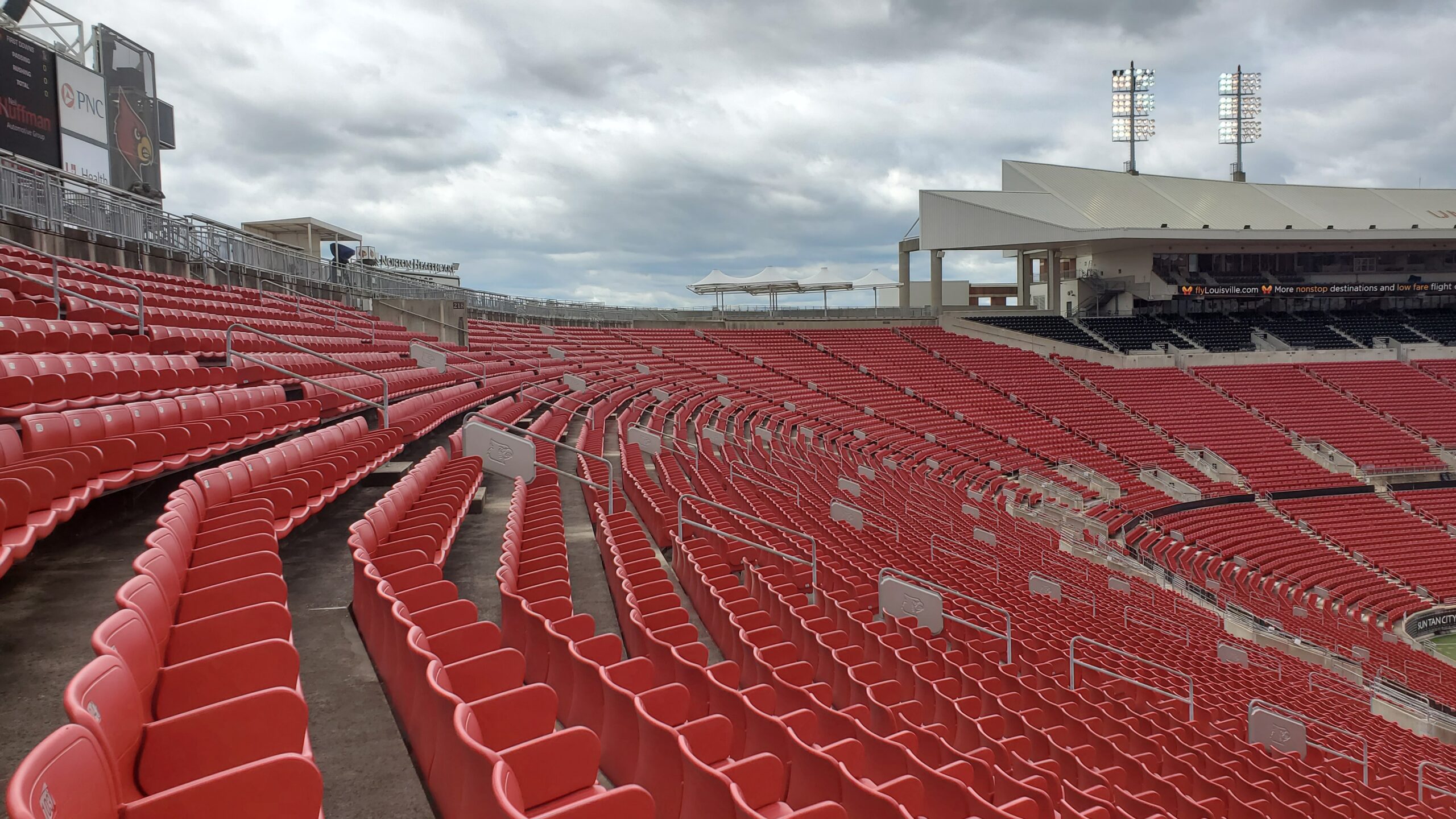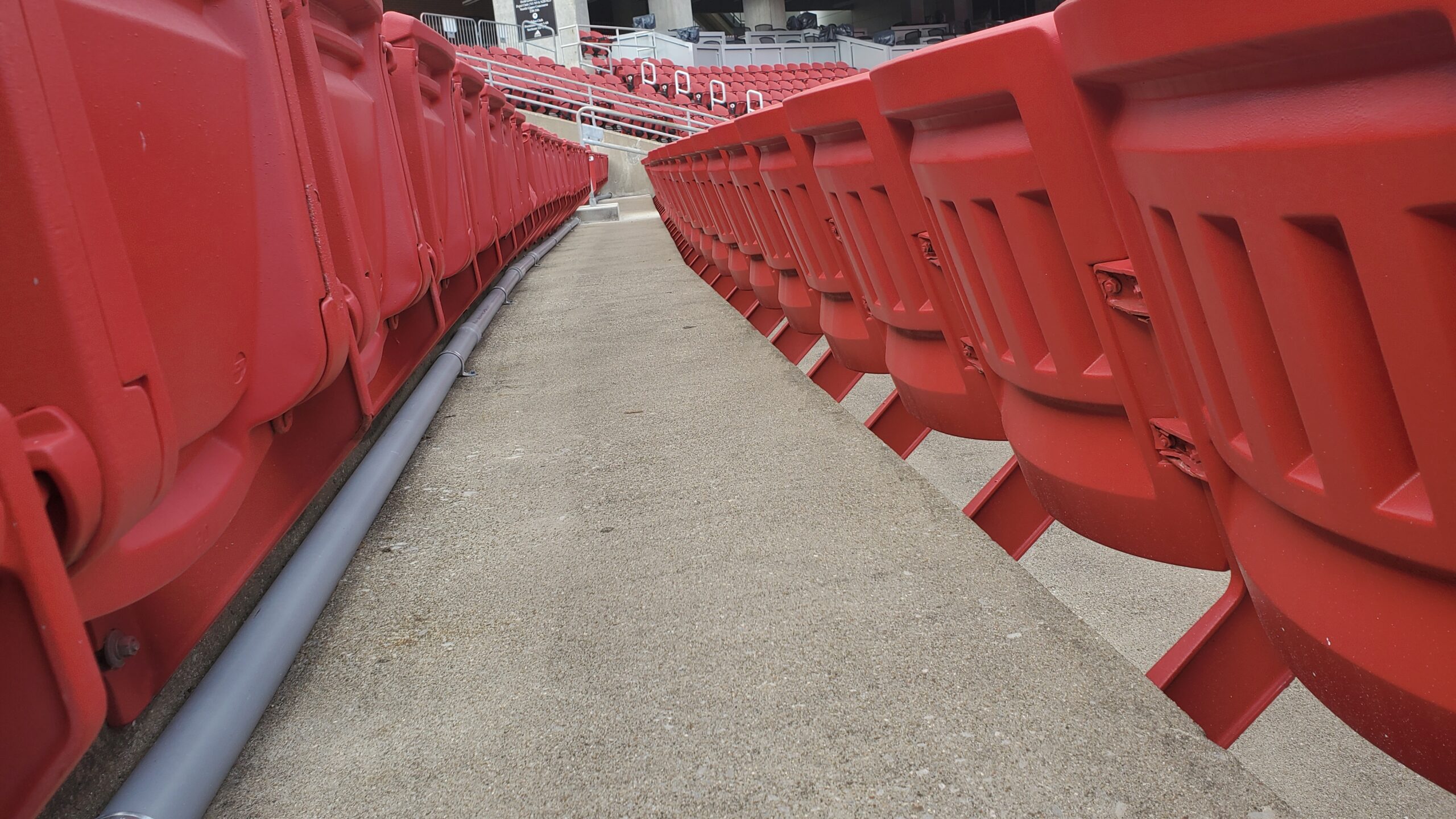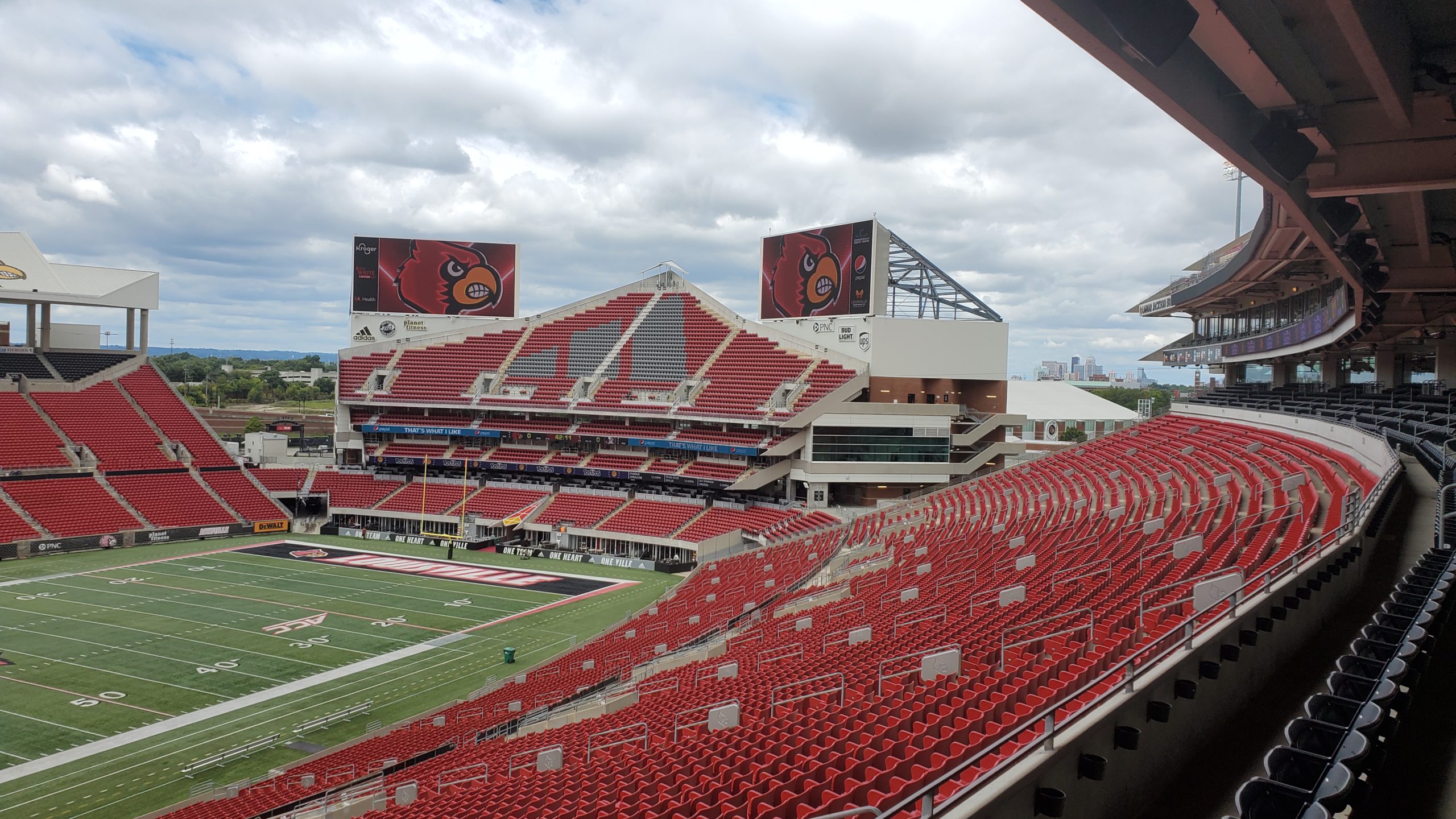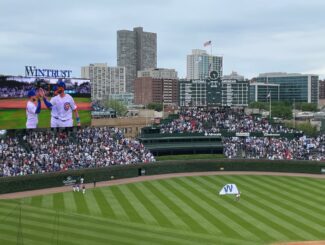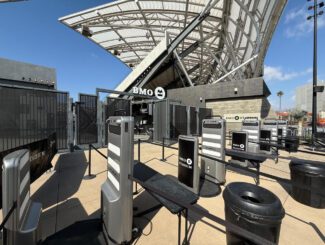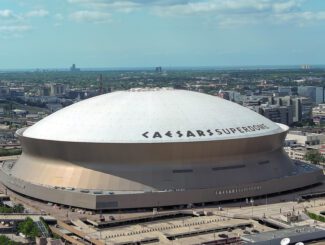You know that old saw about how it takes a lot of wires to build a wireless network? Well here’s a new spin: Sometimes it takes a lot of concrete too.
In what has to be one of the more unique Wi-Fi stadium network installs anywhere, the University of Louisville now has a high-capacity Wi-Fi network in Cardinal Stadium, thanks to the network design as well as the concrete-pouring skills of a deployment team led by AT&T and AmpThink.
There are more details behind the story, but because of an inability to install under-seat antennas in much of the 60,000-seat stadium, the design teams opted for a system of antennas in handrail enclosures for most of the seating bowl. But to get all the wires to the wireless gear required the building of a complex in-bowl conduit circuit — which required the demolition of, and the reconstruction of, 185 concrete steps. And did we mention the five-month timeframe this all had to happen in?
“We had good coverage and good speeds,” said Jason Bond, Louisville’s director of technology. “I had friends at the game who said they were streaming the game on their phones, and watching replays. That’s how you know the network’s good.”
For those wanting to know quickly how it all turned out, the network was almost 100 percent functional by the season’s opening day, with the stadium tech crew seeing 3.1 terabytes of data used on the 1,200-AP network, which used gear from Aruba, a Hewlett Packard Enterprise company.
“We had good coverage and good speeds,” said Jason Bond, Louisville’s director of technology. “I had friends at the game who said they were streaming the game on their phones, and watching replays. That’s how you know the network’s good.”
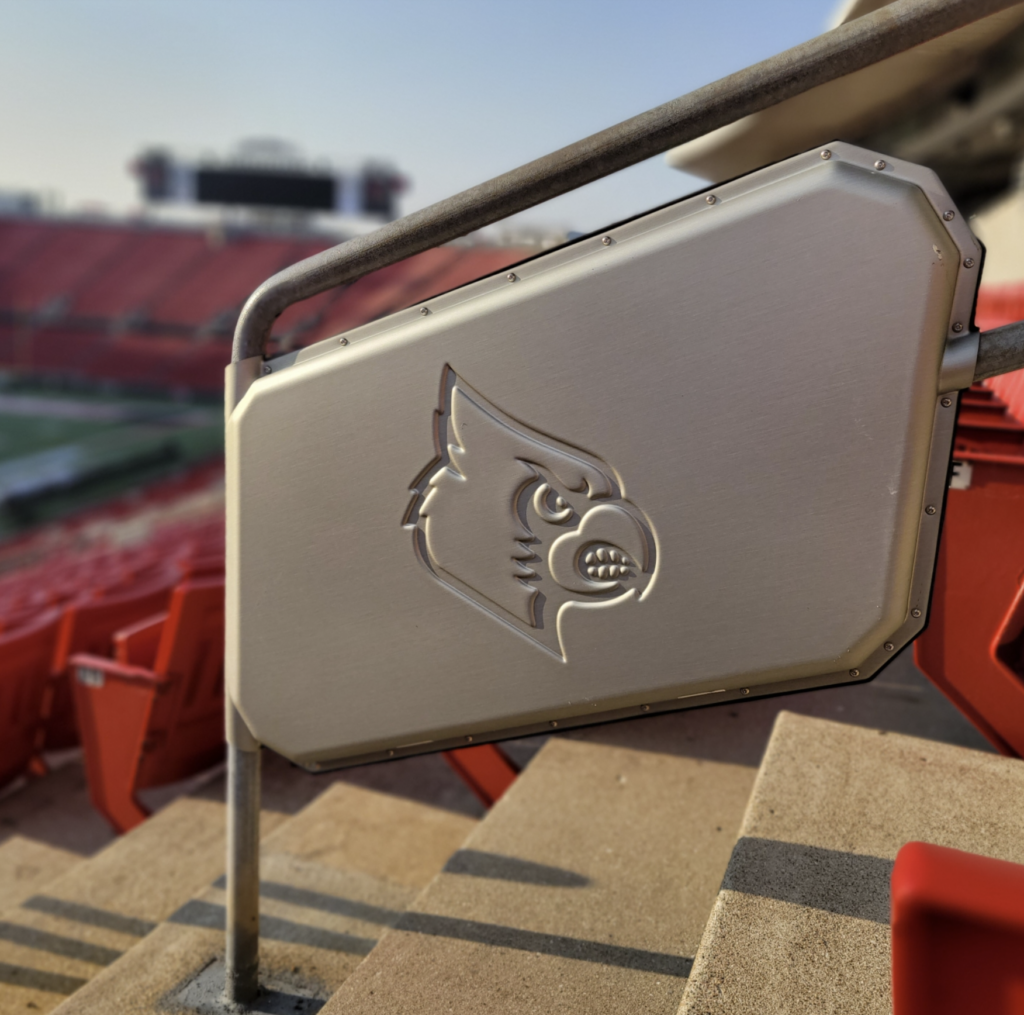
No digging in the dirt
According to Bond, at one point in late 2021 the long-held plans for bringing Wi-Fi to Cardinal Stadium — delayed in part by Covid shutdowns — were still on hold, with no deals signed.
But according to Dennis Myer, client solutions executive for AT&T, the carrier, which had been negotiating with the school on the idea, found a way to use an existing services contract with the state of Kentucky that would provide the resources needed to build the stadium network. So near the end of 2021 the project was green-lighted, giving the school and the suppliers a tight window to get construction done before the fall.
While under-seat Wi-Fi deployments are often a first design choice due to the density of coverage they can provide, the history of the land underneath Cardinal Stadium made it largely impossible to go that route. When the stadium was originally built in 1998, it used land that had been a train yard for most of the past century.
“There’s a lot of dirty dirt there,” said Michael Ortman, Louisville’s associate athletic director and facilities and stadium manager, who estimated that more than a million gallons of diesel oil was spilled into the railroad grounds over its long history. As such, Louisville cannot dig much around the stadium property.
“It didn’t take long for everyone to decide, let’s stay out of the dirt,” Ortman said.
The next design choice was to use a handrail-based enclosure approach, one made even more solid when AT&T chose master technology integrator AmpThink to lead the install. AmpThink, which has a heralded history of stadium network design, deployment and operation, had a long list of handrail-based networks in its resume, including U.S. Bank Stadium in Minneapolis, Notre Dame Stadium, Ohio Stadium at the Ohio State University, and the University of Oklahoma’s Gaylor Family Oklahoma Memorial Stadium.
AT&T’s Myer also noted AmpThink’s can-do approach to construction challenges as another reason the firm was selected.
“We knew AmpThink’s reputation of being able to accomodate [challenges] better than anyone else,” Myer said. “We’re glad we chose them.”
“Getting the lower bowl done was a huge physical construction challenge,” Miller said.
Bucket brigade to rebuild the steps
According to Eric Miller, AmpThink senior project manager who headed up the Louisville network build, the network deploy at Cardinal Stadium was a true roll up the sleeves kind of project.
“Getting the lower bowl done was a huge physical construction challenge,” Miller said. To bring cable to the railing enclosures, AmpThink needed to build a multi-path conduit network under the seats. But to get those conduits to cross stairways meant taking jackhammers to the old steps and pouring new ones with conduit pipes enclosed inside. In all, AmpThink demolished and re-poured 185 step locations, Miller said, with 11 of those being double-high step areas that required four times the concrete of the regular steps.
What made the work even more challenging than the 90-day deadline to get the construction completed was the fact that concrete pouring equipment couldn’t be easily brought to the steps — so the team had pouring stations inside the stadium concourse, and brought concrete to each step using buckets, Miller said.

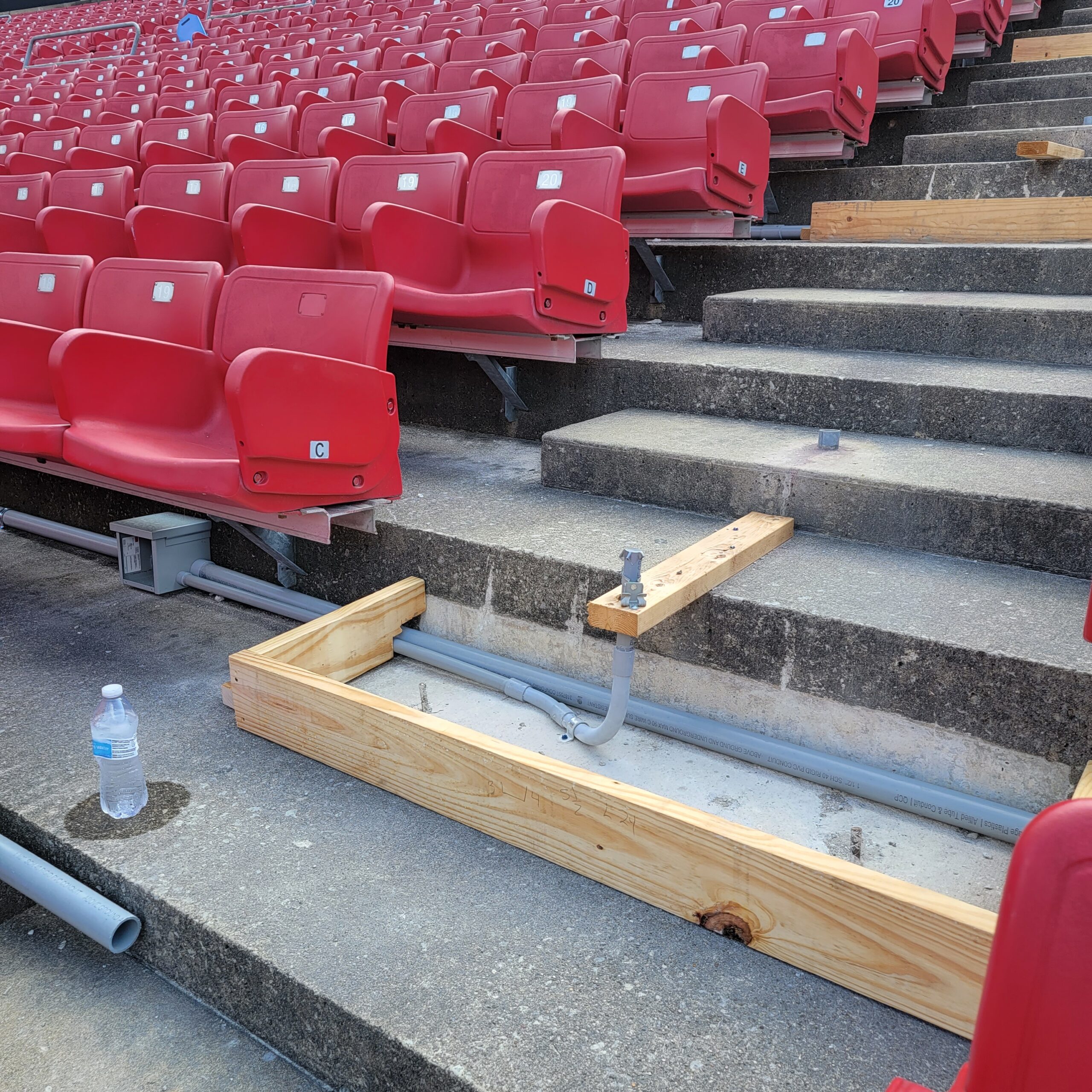
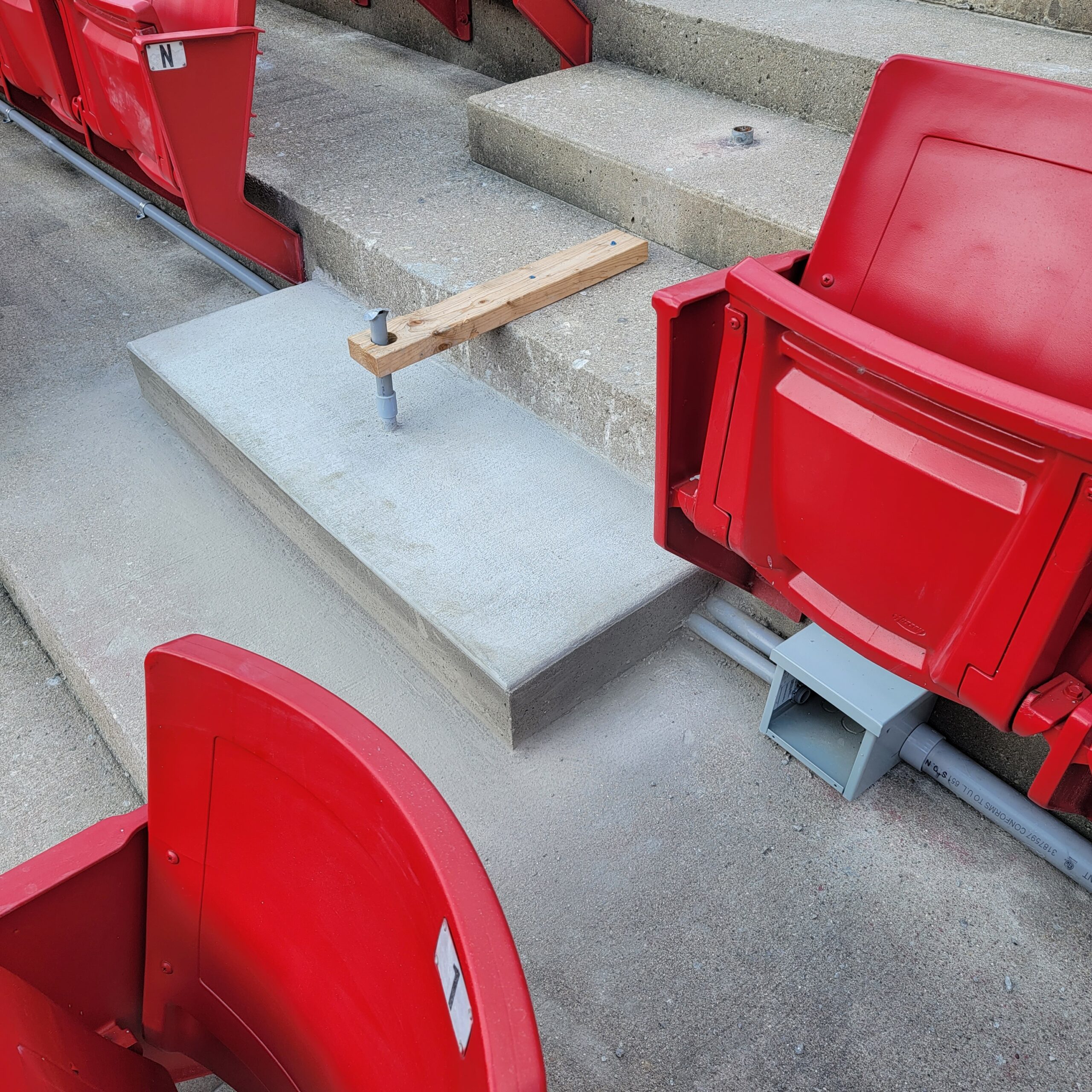
Then came the enclosures themselves, which of course presented another challenge to AmpThink’s engineers. While AmpThink prides itself on its patented enclosure manufacturing — which includes stamped-in team logos to make the enclosures stand out — the varied design of the stadium added a degree of difficulty.
“There was no even slope to things — we had to design the logos to fit eight different angles of slope,” Miller said, a task that required AmpThink crew members to walk every stairway to measure the precise angle needed to make sure that the logos on that stairway’s enclosures sat straight.
In the end, there was what Miller called “a perfect sea of silver enclosures,” 336 in total covering the upper and lower bowls.
“It’s a really slick build,” said Louisville’s Ortman. The network also included another 45 under-seat APs in the north end zone seating, as well as approximately 200 APs for back of house use. AmpThink also ended up digging a tunnel across the road outside the stadium to bring the network to a mixed-use space across the street where the school plans to host activities like away-game watch parties.
Other improvements
The new network follows a recent $63.25-million dollar expansion of the stadium, in which approximately 6,000 seats were added to increase the total capacity to about 60,000. Other new technology adds include two 40-foot by 80-foot LED videoboards in the north end zones and a 24-foot by 92-foot videoboard for the south end zone.
But the new Wi-Fi network may end up being the amenity enjoyed by most of the fans who now attend games, especially since the previous Wi-Fi coverage was almost nonexistent.
“We had some Wi-Fi for ticket scanning and some coverage in club areas, but there really was no fan-facing Wi-Fi to speak of,” Louisville’s Bond said. A cellular distributed antenna network (DAS) was installed by Boingo in 2014, but it didn’t include AT&T, whose customers now enjoy automatic offload to the Wi-Fi network.
According to Bond, fans took to the network immediately, with 10,000 on the Wi-Fi for the home opener, and averages of around 12,500 using the network later in the fall. According to everyone involved, the project took up a lot of late nights and extra hours, but to have happy, well-connected fans is worth the effort. “We get very few complaints [about the network],” Bond said. “It’s something our fans are going to expect now.”
